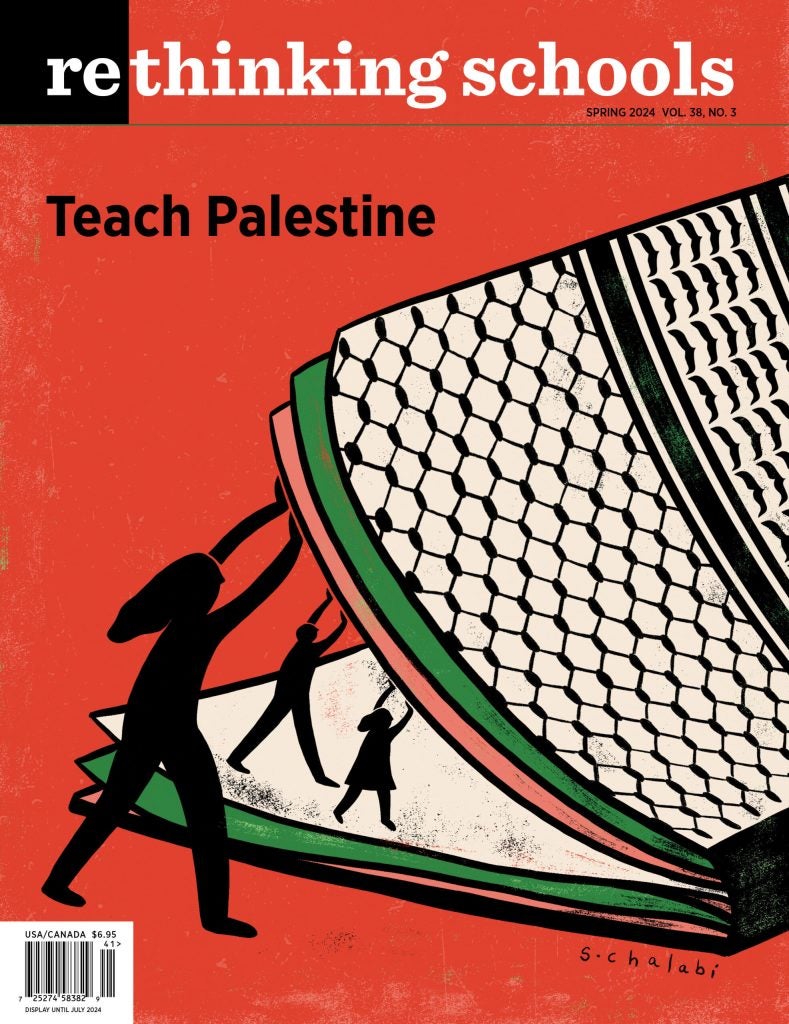
By Susan Douglass
The events of October 7, 2023 in Palestine and Israel immediately increased the demand for Education Outreach teaching materials and presentations, as many teachers lacked information they could trust that provides historical background for contemporary events. In addition, schools and school systems requested help dealing with the effects of the conflict, namely the high emotions and conflicting opinions it engendered. Through my capacity as director of the education outreach programs at CCAS and the Center for Muslim-Christian Understanding, I worked with school leaders to devise presentations to help them deal with accusations of anti-Semitism and Islamophobia among students, as well as incidents of bias that occurred in schools, on social media, and among “the adults”—family members, teachers and community leaders. We were particularly well prepared to address these needs because of CCAS’ teaching resources and because of the Bridge Initiative at ACMCU, which, for several years, has been researching and tracking the occurrence of Islamophobia at the national and global level.
The presentations we developed discussed the centuries-long existence of Islamophobia, which is defined by the Bridge Initiative as “an extreme fear of and hostility toward Islam and Muslims which often leads to hate speech, hate crimes, as well as social and political discrimination.” Islamophobia dates back to medieval Europe but saw an upsurge during the nineteenth century period of imperialism and colonization of Muslim regions in Asia and Africa, and the struggles for independence in Eastern Europe. The presentations include stereotyped images of Muslims that have appeared in movies and animated films throughout the decades, including Bugs Bunny’s encounter with a swarthy, big-nosed, scimitar-bearing figure—an image multiplied and expanded on in the notoriously stereotyped images of Arabs in Disney’s Aladdin. Images from the collections of Brandeis University and the Philadelphia Holocaust Museum also demonstrate that anti-Semitic propaganda is cut from the same cloth as Islamophobia and that both forms of xenophobia have propagated remarkably similar denigrating tropes, including stereotypes of physiognomy, metaphors comparing these groups to vermin or swarms of insects, and figures striding the globe to hint at widespread conspiracies, the growing reach and un-assimilability of Muslims and Jews.
At the same time, these presentations have pointed out the shared linguistic roots of Hebrew and Arabic, that Arabs are also a Semitic people, and that the people who have for millennia populated the Levant, or the Holy Land, have been part of the Abrahamic faith traditions and shared cultural movements. Moreover, Christians, Jews, and Muslims have co-existed peacefully in the Middle East and North African region and beyond since the rise of Islam. It has not been ancient hatreds, but colonialism and nationalisms that have interrupted the legal and cultural structures of these societies—in particular since the post-WWII period.
The second focus of the presentations have been to educate students, parents, and administrators on the impact of bullying and prejudice and to provide tools for combating both. We also address ways to become “up-standers” who speak up against the practice and support its victims in positive, non-aggressive ways. In addition to highlighting resources from the National Institutes of Health, the U.S. Department of Education, and advocacy organizations such as the Institute for Social Policy and Understanding and the David’s Legacy organization, the presentations feature scenarios taken from students’ actual experiences and include discussions and advice for dealing with similar, real-life situations. These presentations have been given for large groups through the Montgomery County Public School system, with more than 100 teachers and 500 students at some individual sessions, as well as at other regional schools and at the Smithsonian Arab American National Museum in Dearborn, Michigan.
It is hoped that inclusion of various forms of prejudice will send a message of unity and empowerment in these learning communities rather than the focus on which side is right or wrong on the issue that has created the renewed need for it.
Dr. Susan Douglas is the Director of Education Outreach at CCAS.
This article was published in the Fall 2023-Spring 2024 issue of the CCAS Newsmagazine.